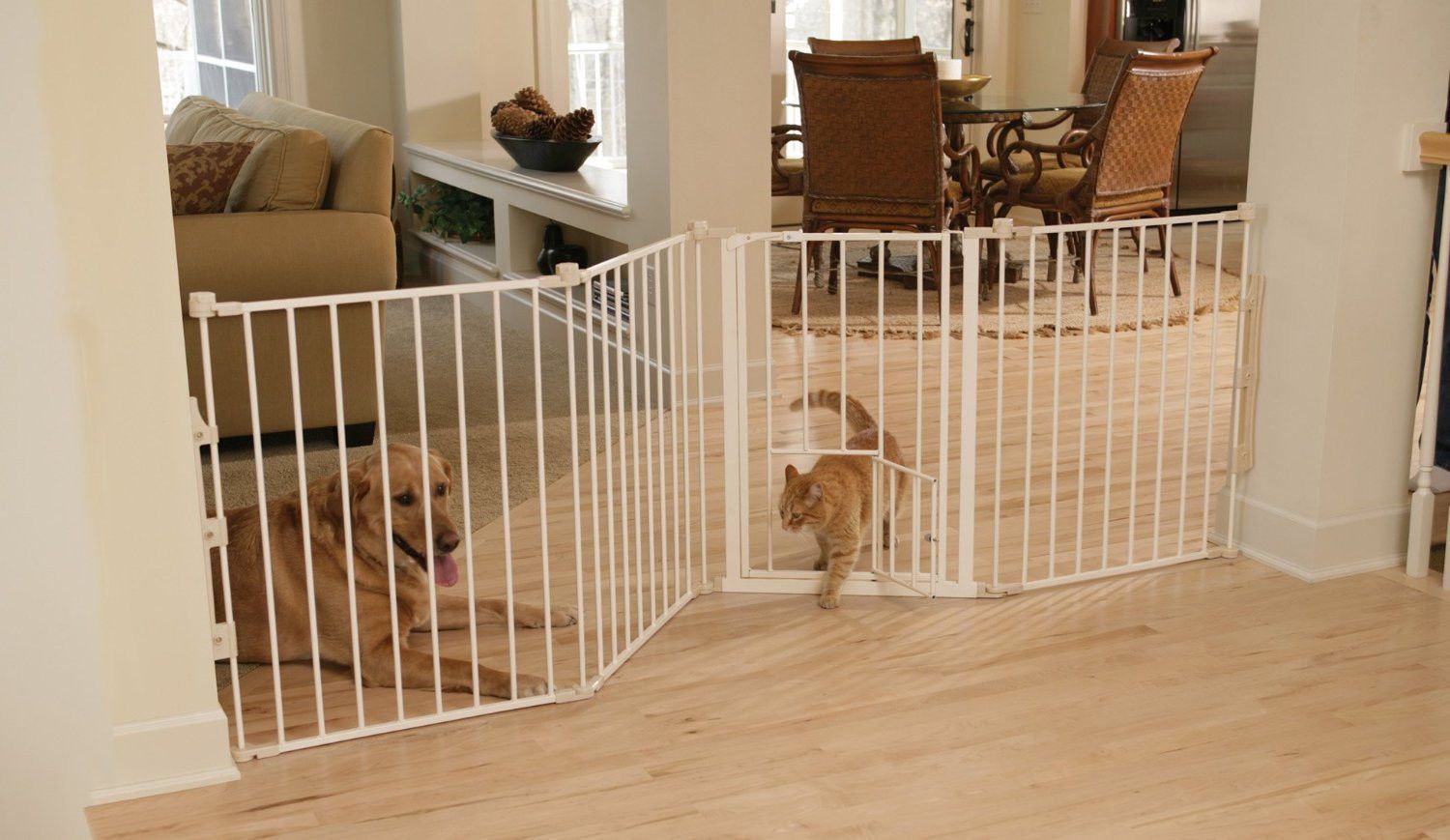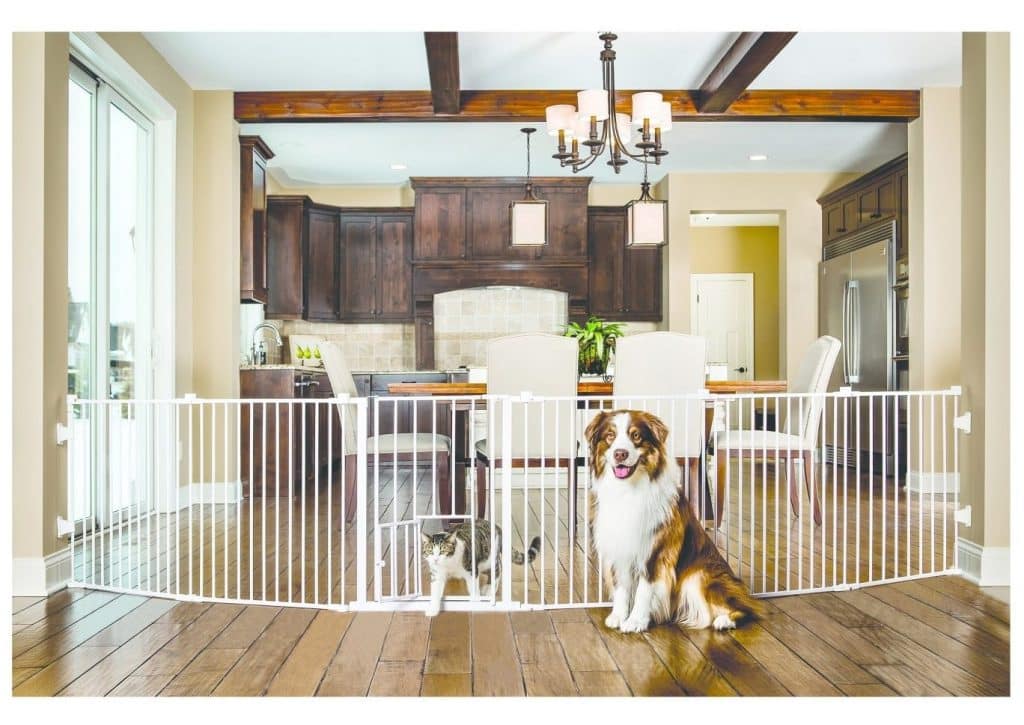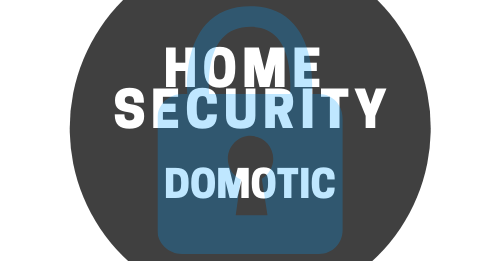All About Fences and Security Barriers for Dogs

Dogs are curious animals, and they always want to explore and learn about their environment. However, not all places are suitable for pets, and it is necessary to find the right way to keep them safe and in a safe place. Safety fences or barriers for dogs allow you to keep your pet out of the kitchen, away from the flames of the fireplace, or the baby’s play area. In this article, we’ll tell you everything about fences and security barriers for your furry buddies!
So, What Are Dog Fences for?

Barriers for dogs are a useful product for anyone who has a pup at home. Its primary function is to mark a border or a separation between the space to which the dog has access and the area to which it cannot pass. The advantage of these barriers is that pets have a vast space to circulate through, and even if they have the fence, it does not completely isolate them from the restricted area; that is, they can see and hear what is happening on the other side.
The most common situations in which dog barriers are used are:
-
When the dog is left alone at home, but you do not want them to enter the bathroom or kitchen, for example.
-
When a new pet comes home, it takes a few days of settling down for both of you, especially if you don’t seem to get along.
-
If your pooch has bad behavior when someone comes home and you prefer to have it controlled.
-
To train your puppy when you are at home and teach him to tolerate loneliness better. This way, when you go to work or have to go out, your dog will not feel as much anxiety.
-
Both indoor and outdoor pens are great for keeping puppies or smaller, rambunctious dogs in check.
-
Multi-panel folding barriers are ideal for placing in the fireplace or other dangerous places that you do not want your dog to go near.
-
If your house is designed as an “open space,” you don’t want your dog to access all the rooms. Therefore, a security barrier or a separator is ideal for delimiting the access area of pets.
-
People who want to keep a room airy but don’t want their pet sniffing around in it.
-
Security gates are ideal for blocking pet access to hallways and stairs.
Types of Safety Barriers for Dogs
Keeping loved ones safe is a natural desire that leads us to seek and create safe places where there are no dangers or threats to our pets’ integrity. But every house is different, and the security measures that work for one may be inappropriate for another. But you do not have to worry, as there are solutions for all cases and many types of barriers, among which you can find the one that best suits your home and your four-legged best friend.
Types of Fences Depending on Where You Place Them
Indoor Fences

These are barriers that are generally placed on the doors of the rooms or on the stairs that you do not want your dog to have access to. They are also instrumental in marking a separation line between the dog and the fireplace or dividing a room in two, delimiting the dog’s space.
Indoor fences are of many types, but the most common are:
-
Folding fence: it is an articulated barrier formed by several bodies that overlap each other when closed. They can be placed in a straight line or played with their structure to create a pavilion.
-
Roll-up fence: usually made of mesh, which wraps around itself when open. The best are the transparent ones, also called “magic doors,” that do not limit the dog’s visibility, but they define the space to which it has access.
-
Extendable fence: it is a linear barrier that can be lengthened more or less depending on the place where it is placed.
-
Classic fences: these are fixed grids or panels with a standard dimension and whose size cannot be changed.
There are also indoor corrals (folding fences), which define a specific area within a room.
Outdoor Fences

Outdoor safety barriers, which are more like cages or pens, should be made of more durable and weather-resistant materials. Generally, the most used material is metal.
Types of Fences Based on Their Material
#1. Wooden Fences
Wooden fences are a versatile and elegant product. You can find a multitude of colors and designs from which to choose the one that best suits your home’s decoration. As a general rule, folding wooden barriers are usually heavier and more robust, facilitating a firm and secure fixation. On the other hand, the smell of the material can seem appetizing for certain dogs, and especially for puppies, which are in their exploratory stage and the period of teething change. To avoid encountering bites on the fence, you can use a dog repellent spray, whose bitter taste will keep the security barrier safe. Furthermore, they are not suitable for prolonged outdoor use, as the wood deteriorates quickly, considerably reducing the product’s quality.
#2. Metal Fences
Metal barriers are the most resistant from two points of view:
-
Dogs will not bite these types of structures as often as they could with wooden fences. That’s because the metal is much less palatable and appealing.
-
Easy maintenance, as it can be cleaned with a single damp cloth. Also, it is more resistant to water than wooden barriers.
The drawback of dividers made of metal resides in the little decorative aesthetics that some models bring to the home.
#3. Mesh Fences
Mesh fences are becoming more resistant and dog-proof. The most sought after are the “magic doors,” which are transparent mesh dividers. The dog will be able to see what is happening on the other side of the barrier with total clarity but without being able to access that area physically. They can be fixed, or roll-up and are ideal for both indoors and outdoors.
